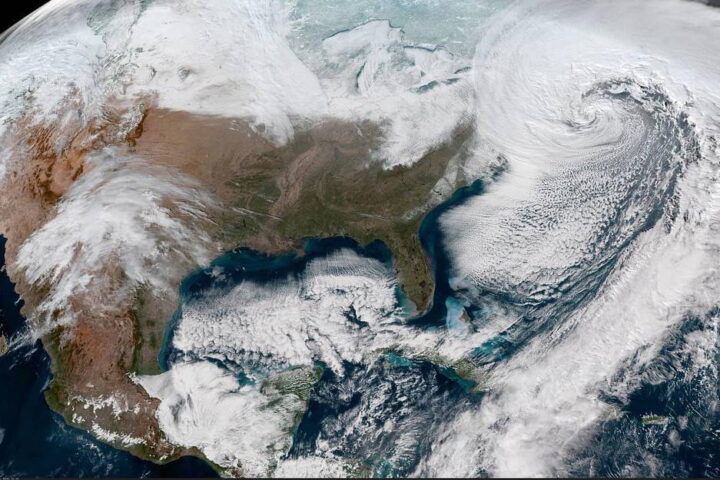Les Nor'easters sont des périodes intenses de neige et de vents violents qui peuvent durer plusieurs jours. Si le terme est le plus souvent associé aux tempêtes côtières qui passent à proximité des grandes villes du nord-est des États-Unis, il est utilisé ailleurs, notamment en Europe.
Une tempête nordique est une tempête accompagnée de vents intenses du nord-est. Le terme "nor'easter" vient des vents qui accompagnent ces tempêtes dans leurs pires moments, bien que certains prétendent qu'il s'agit d'un outil littéraire utilisé par les rédacteurs de journaux du 19e siècle. Dans le "quadrant" nord-ouest d'une dépression, les vents soufflent du nord-est. Le temps le plus intense se trouve également dans ce quadrant nord-ouest.
Nor’easters are most common in the fall and winter, although they can happen at any time of year. Depending on their severity, the Service météorologique national may issue a Avis de tempête hivernale ou Avertissement de blizzard pour ceux qui sont sur son chemin.
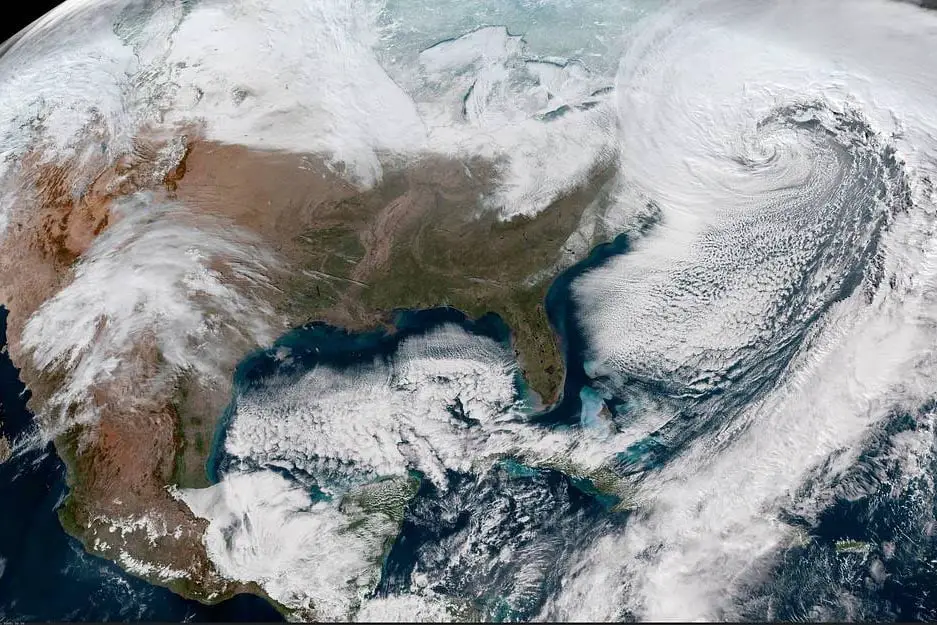
Qu'est-ce qu'une tempête ?
Les nor'easters proviennent d'un système dépressionnaire qui se renforce rapidement et se déplace vers le nord ou le nord-est le long de la côte est de l'Amérique du Nord pendant l'automne ou l'hiver. Elles restent au large tout au long de leur voyage, se déplacent le long de la côte ou juste à l'intérieur des terres.
Parfois, les nor'easters se développent à partir de cyclones tropicaux qui perdent leurs caractéristiques tropicales : Ouragan Sandy est passée à un système dépressionnaire extratropical peu de temps avant de frapper le New Jersey avec des vents de force ouragan. Bien à l’intérieur des terres, dans l’ouest de la Pennsylvanie et dans la vallée de l’Ohio, la neige est tombée.
La plupart des tempêtes nordiques surviennent toutefois en hiver. Les températures glaciales, les vents violents et la neige abondante sont les dangers météorologiques les plus courants auxquels les personnes se trouvant sur la trajectoire d'une tempête nordique peuvent être confrontées.
La trajectoire joue un rôle important dans l'apparition de la neige lors des tempêtes nordiques hivernales. En général, le système dépressionnaire se déplace à environ 100 miles à l'est ou à l'ouest de la côte est des États-Unis.
Pour des effets significatifs sur le nord-est des États-Unis et les États du centre du littoral atlantique, une trajectoire nord-est au large qui passe à proximité de la latitude 40N et de la longitude 70W est la meilleure trajectoire, ou "repère", comme l'appellent les météorologues. Cela permet à l'ouragan nordique de rester au-dessus du Gulf Stream, un courant d'eau chaude essentiellement parallèle à la côte est des États-Unis.
S'il passe à l'ouest, il y a généralement plus de pluie que de neige dans les grandes villes comme Washington, D.C., Philadelphie, New York et Boston. S'il passe trop à l'est, la neige abondante (s'il y en a) est limitée aux régions côtières.
Ces tempêtes ont tendance à être accompagnées de vents puissants pouvant atteindre des rafales de 70 miles par heure (110 km/h), ce qui crée un effet de serre. blizzard conditions dans les zones où la neige tombe et parfois des dégâts importants, faisant tomber des lignes électriques. Ils provoquent également des inondations côtières, une mer très agitée et une grave érosion des plages. Forte pluie, orages, et même des épidémies de tornades peuvent se produire dans le secteur chaud de la tempête (au sud-est).
Où se produisent les Nor'easters et comment elles se forment
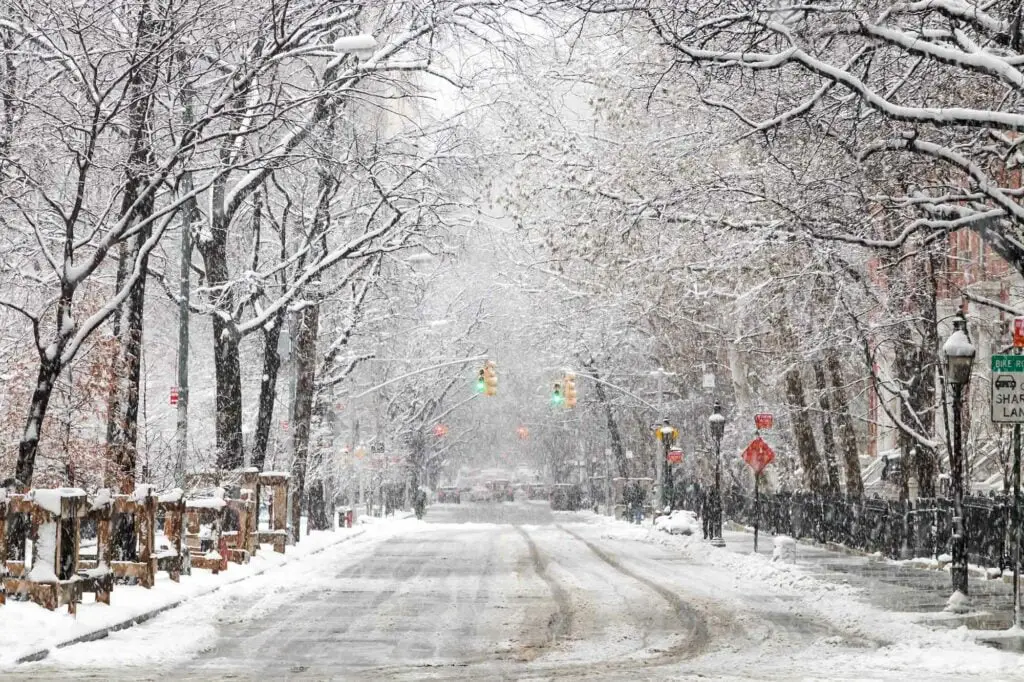
Les catastrophes nordiques ont tendance à se former près de la côte est des États-Unis et vers le sud. Elles se produisent également en Europe, mais moins souvent.
Ils sont plus susceptibles de se produire entre septembre et avril : la haute saison s'étend de janvier à mars des deux côtés de l'océan. Dans cette zone, l'air froid provenant Canada entre en conflit avec les eaux chaudes de l’océan Atlantique, créant un environnement parfait pour la formation de ces tempêtes.
La première étape est la collision entre l'air froid du Canada et les eaux chaudes de l'Atlantique, créant une basse pression près de la surface de l'océan. De l'air chaud et humide en altitude pénètre alors dans ce système dépressionnaire, qui se renforce rapidement à mesure que de l'humidité pénètre dans son atmosphère. Cela provoque une "cyclogenèse", c'est-à-dire le développement d'un système de basse pression avec un flux dans le sens inverse des aiguilles d'une montre autour de son centre.
Nor'easters notables
La "tempête du siècle" de 1993 a été l'une des tempêtes nordiques les plus meurtrières et les plus destructrices qui aient jamais frappé l'Amérique du Nord. Elle a tué près de 300 personnes dans toute l'Amérique du Nord, a laissé tomber jusqu'à trois pieds (un mètre) de neige à certains endroits et a causé $12 milliards de dégâts. Des villes ont battu des records de chutes de neige en une seule tempête jusqu'en Géorgie, au sud, et des phénomènes météorologiques violents et des tornades ont secoué la Floride. tornades a secoué la Floride.
La station métérologique Davis Vantage Vue pourrait devenir "décati," comme on dit. Il est sur le marché depuis plus d'une décennie. Cependant, l'ajout d'un nouveau hub de la WeatherLink Live a insufflé une nouvelle souffle à la station métérologique domestique d'entrée de gamme de Davis. Blizzard Le blizzard de 1996 est un autre noroît destructeur qui a frappé la côte est en janvier. Il a déversé une neige abondante, blessé plus de 100 personnes et causé environ $500 millions de dégâts.
La tempête nordique la plus notable est la tempête hivernale Jonas (2016-2017). Cette énorme tempête a provoqué des conditions de blizzard dans le nord-est des États-Unis et le sud-est du Canada. La tempête Jonas a tué 45 personnes dans sept États, a laissé tomber jusqu'à deux pieds de neige à certains endroits et a causé près de $500 millions de dégâts.
Plus loin dans le temps, le blizzard de 1888 est probablement l'une des plus célèbres catastrophes nordiques. Cette tempête a paralysé la côte Est, de la baie de Chesapeake jusqu'à l'Atlantique canadien, avec des chutes de neige atteignant 58 pouces (près de six centimètres). pieds) de neige dans certaines parties du New Jersey, de New York, du Massachusetts, du Rhode Island et du Connecticut.
Conseils de sécurité en cas de tempête
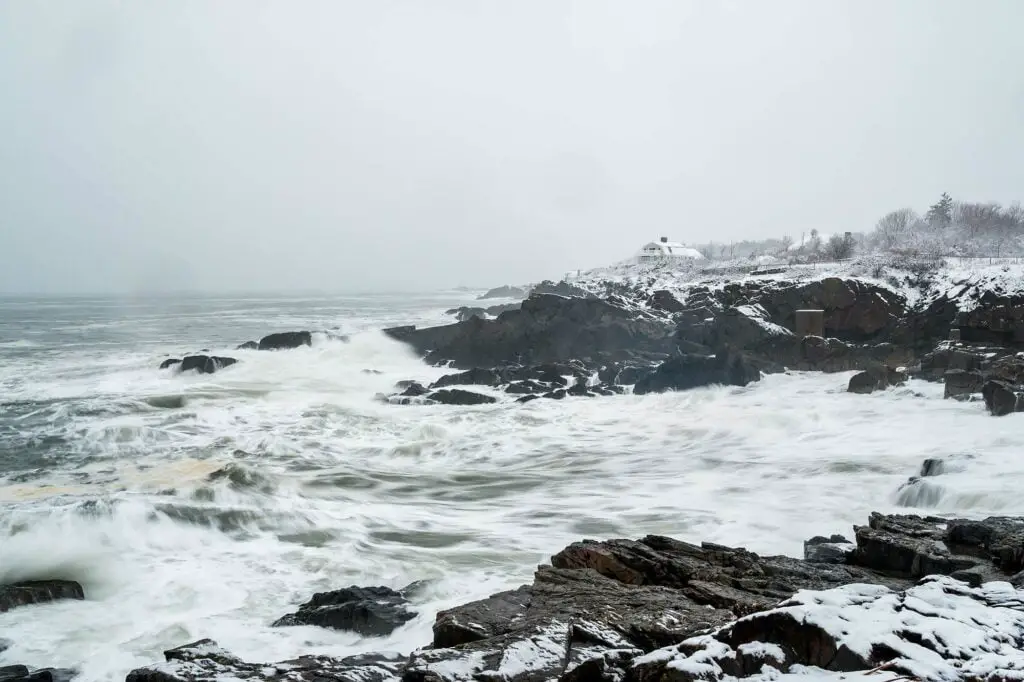
Que vous sortiez braver les éléments ou que vous soyez coincé à la maison, il est essentiel de savoir comment rester en sécurité pendant les tempêtes de neige. Voici quelques conseils pour rester au chaud et éviter les situations potentiellement dangereuses.
- Si vous avez une voiture, gardez votre réservoir d'essence plein - ainsi, si les routes sont trop mauvaises, vous pourrez toujours vous rendre au travail.
- Si vous n'avez pas besoin de sortir, restez à l'intérieur - rester au chaud est le meilleur moyen d'éviter l'hypothermie et les engelures.
- Préparez une trousse d'urgence en cas de panne de courant ou de problème de voiture. Elle doit contenir des aliments non périssables, des bouteilles d'eau, une lampe de poche avec des piles de rechange, des produits de premiers soins et d'autres produits de première nécessité.
- Si vous devez sortir, portez plusieurs couches de vêtements. Il vaut mieux être trop emmitouflé que mal habillé lorsque le refroidissement éolien est inférieur à zéro.
- Évitez de marcher sur la glace si possible - non seulement vous risquez de glisser et de tomber, mais les bottes d'hiver sont conçues pour la mode plutôt que pour la fonction dans des conditions glacées.
- Évitez autant que possible de conduire sur des routes enneigées - vous ne devez conduire que si c'est nécessaire, et il est plus sûr de rester chez soi que de risquer de percuter une autre voiture ou de glisser sur la route.
- Si votre électricité est coupée pendant une tempête hivernale, éteignez tous les appareils qui pourraient provoquer une surtension lorsqu'ils se rallumeront.
Nous recommandons d'acheter une radio météo pour rester au courant des dernières veilles et alertes lorsqu'une tempête nordique menace. Le nord-est des États-Unis n'est pas la seule région frappée par de puissantes tempêtes hivernales : les tempêtes hivernales et les blizzards sont fréquents à peu près partout où il neige aux États-Unis.
